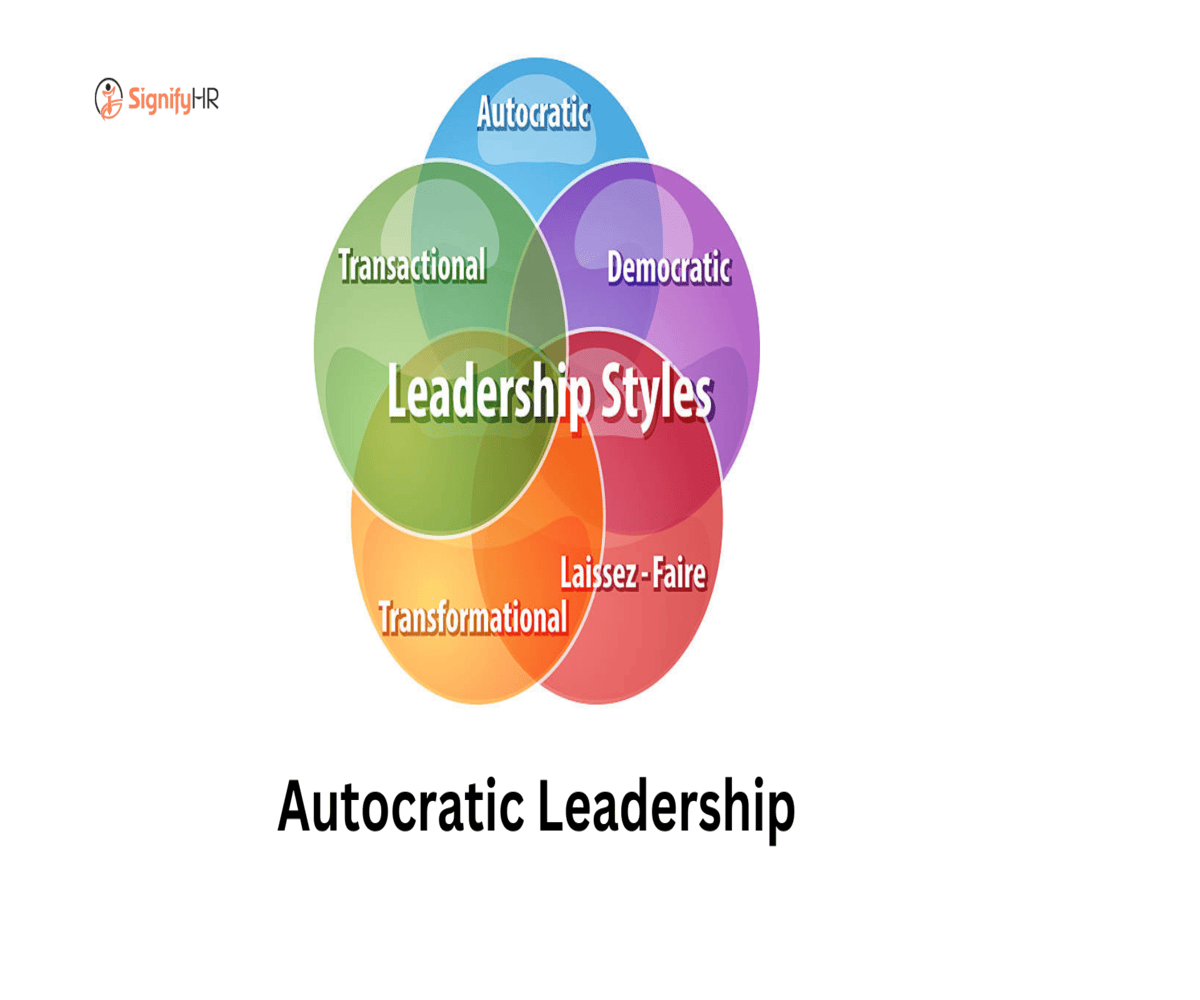Introduction to Autocratic Leadership
Autocratic leadership, also known as authoritarian leadership, is a management style where a single leader holds significant control over decision-making. This leadership style is characterized by strict rules, minimal input from subordinates, and a clear chain of command. It is often used in environments requiring strong direction, efficiency, and fast decision-making.
Key Learning Objectives
- Understand the core principles and characteristics of autocratic leadership.
- Explore the advantages and disadvantages of this leadership style.
- Analyze real-world examples of autocratic leaders and their impact.
- Learn how and when to apply autocratic leadership in business settings.
- Compare autocratic leadership with other leadership styles.
1. Characteristics of Autocratic Leadership
a. Centralized Decision-Making
- The leader has absolute control over decisions.
- Subordinates follow instructions with minimal input.
b. Clear Hierarchical Structure
- A well-defined chain of command is followed.
- Employees have designated roles and responsibilities.
c. Strict Supervision and Control
- Leaders closely monitor employees’ performance.
- There is little room for independent decision-making.
d. High Efficiency and Discipline
- Tasks are completed quickly and effectively.
- Employees adhere to strict rules and protocols.
Diagram: Hierarchical Structure of Autocratic Leadership
CEO/Leader
|
|-- Managers
|
|-- Employees2. Advantages of Autocratic Leadership
a. Faster Decision-Making
- Since only one person makes decisions, actions are implemented quickly.
- Suitable for crisis management and urgent situations.
b. Strong Direction and Clarity
- Employees clearly understand their tasks and responsibilities.
- Reduces confusion and ensures streamlined workflow.
c. Increased Productivity in Specific Situations
- Effective in industries requiring precision, such as military, manufacturing, and construction.
- Ensures compliance with regulations and standards.
d. Maintains Order and Discipline
- Ideal for organizations with strict protocols.
- Employees follow established rules without question.
3. Disadvantages of Autocratic Leadership
a. Low Employee Morale and Creativity
- Employees may feel undervalued and demotivated.
- Limits innovation and creative problem-solving.
b. High Employee Turnover
- Lack of autonomy may lead to dissatisfaction.
- Employees may leave due to limited career growth opportunities.
c. Over-Reliance on the Leader
- Organization may struggle if the leader is absent.
- Employees may become dependent on direct instructions.
d. Resistance to Change
- Employees may struggle to adapt to new processes.
- Lack of diverse perspectives in decision-making.
Diagram: Pros and Cons of Autocratic Leadership
+ Fast Decision-Making - Low Employee Morale
+ Clear Responsibilities - Limited Creativity
+ High Discipline - Employee Turnover
+ Suitable for Crisis - Over-Reliance on Leader4. Real-World Examples of Autocratic Leaders
a. Steve Jobs (Apple Inc.)
- Known for his strict control over product design and innovation.
- His autocratic approach led to groundbreaking products.
b. Henry Ford (Ford Motor Company)
- Implemented strict policies to maximize efficiency in production lines.
- Focused on standardization and discipline to scale manufacturing.
c. Military and Government Leadership
- Used in emergency responses, law enforcement, and national security.
- Clear command structures ensure effective decision-making.
5. When to Apply This Style Leadership
a. Crisis Situations
- During emergencies, such as natural disasters or military conflicts.
- Quick decision-making can save lives and resources.
b. High-Risk Industries
- Aviation, healthcare, and construction require precision and discipline.
- Mistakes can have significant consequences.
c. New Startups and Business Turnarounds
- Startups often require a single visionary leader to set clear goals.
- Failing businesses may need strong leadership to restructure operations.
6. Comparison with Other Leadership Styles
| Leadership Style | Decision-Making | Employee Involvement | Best Used In |
|---|---|---|---|
| Autocratic | Centralized | Low | Crisis Management, High-Risk Industries |
| Democratic | Shared | High | Creative Industries, Collaboration-Based Organizations |
| Laissez-Faire | Decentralized | Very High | Innovation, R&D, Startups |
Conclusion
Autocratic leadership is an effective management style in certain business environments where strong direction, quick decision-making, and discipline are required. However, it has limitations, such as low employee morale and creativity. Understanding when and how to implement autocratic leadership can help businesses maintain efficiency while balancing employee engagement.
For more expert insights on management principles, leadership strategies, and business growth, explore SignifyHR’s learning resources today!
Lead with authority, inspire discipline, and drive success with autocratic leadership!

